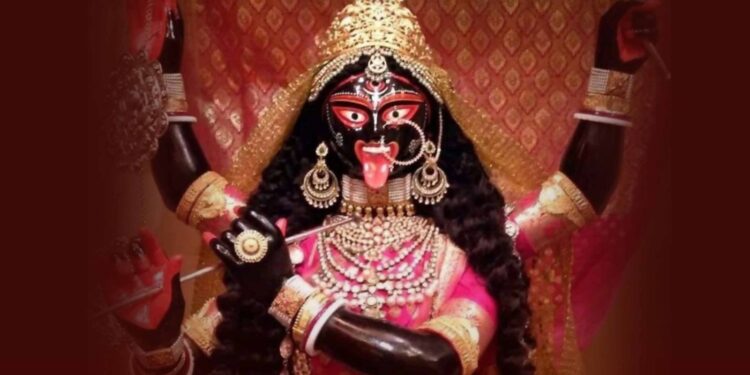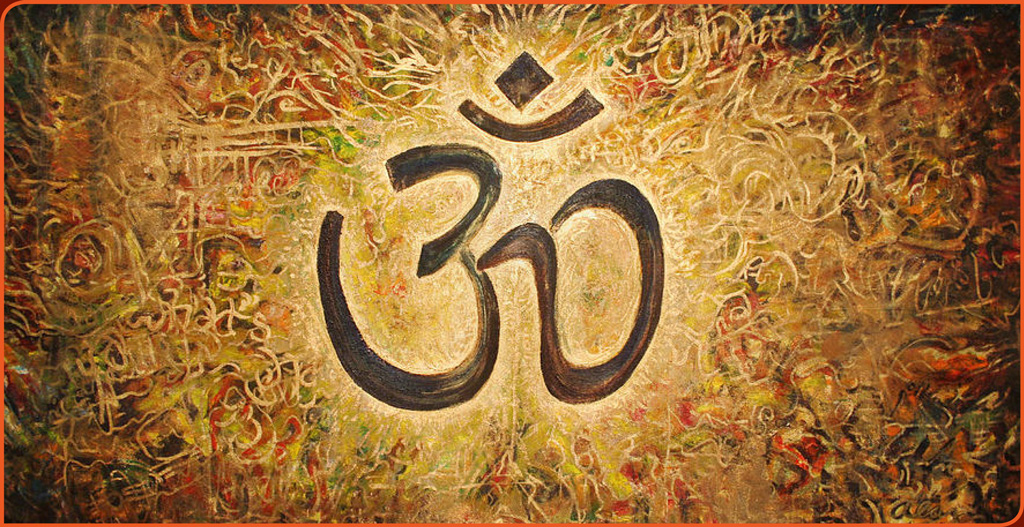Hindu dharma is not a publicity convenient religion. In olden days our grandmas never had any ambivalence on offering sindur and flowers at the feet of naked Mother Kali adorned with a garland of human heads when the same grandma dutifully lighted a lamp at the tulsi-manch in the evening for Narayan and offered sweets for Madan Mohan in Vrindavan Lila where the youthful Lord was engaged in His dance drama with scores of married and unmarried women (Gopis) without the presence of any other male. It is her grandchildren educated in Christian influenced education/society in modern ages who are aghast at Hindu worship practices for the blood smeared naked Mother Kali and the questionable morality of God having good times with young women without the knowledge of their husbands and other family members.
Today’s generation is not aware of the universal spread and intricacies of Hindu practices. Some of them apologize for the seemingly insane Hindu observes, some ridicule them while others simply dismiss those “barbaric” practices. While performing pujas in USA for years I encountered several Hindu women complaining about the bizarre practices of Hindus. A woman from Uttar Pradesh did not approve of Sri Ram going to vanavas (adopting an uncertain jungle life in place of the safety of a civilized society) taking his wife with Him because according to her the husband should follow “Pati Dharma” (duty of a husband) by protecting his wife at home in a civilized society, not taking her in the uncertain forest abound with wild animals (and demons) just to keep a promise to his aging father. A Punjabi woman told me that she thinks Lord Shiva with matted hair, and all is too wild as God for her children. A Maharashtrian woman told me that she keeps her daughter away from Radha-Krishna business because Radha was not Krishna’s wife; she is scandalized by Radha-Krishna relations. Hindus too want a warm, uncontroversial and comfortable religion as with a Santa Claus in Christmas.
Krishna has a positive image in the western world. Daughter of a friend of mine hailing from Uttar Pradesh, told me that her professor and her classmates in the University of Delaware discussed Vrindavan Lila (divine sport of Sri Krishna at Vrindavan) in the class and they all approved the antics of Lover Boy God. It dovetails well with the current western idea of love as religion.
That’s the kind of God our children in America, and perhaps their Hindu parents, feel comfortable with though perhaps not for the right reasons. Dance drama (Lila) displayed by Sri Krishna with the young women (Gopis) at Vrindavan is termed Madhur Bhava which is characterized by sweet devotion to God where the devotees lose all sense of me and mine; only thou (God) remain manifested as unconditional love. Gopis lost their ego and body consciousness, a rare treat that happens only by grace of God, and not by personal efforts, nor by reading the shahstras (scriptures). Endowed with such grace they ignored all societal norms on modesty which forbade them to adore a male outside their close family in the presence of others. Most of the casual admirers of Sri Krishna at the university may not be aware that the same Krishna when He was a mere infant sucked the life out of Putana, the demoness, when Putana came to kill Him by pretending to be a wet nurse. Also, the same Sri Krishna who was surrounded by adoring women (Gopis) in Vrindavan in His youth vanished suddenly never to return and went to Mathura to slay the demons Kamsa and Chanur to protect His devotees. How the same Krishna later taught Hindu Darshan (Hindu world view and spiritual philosophy) in a battlefield through Gita is unknown to most of them.
Kali comes from the word Kalah meaning Time. Time destroys everything, hence Kali, the destroyer. In Gita too the Lord declared “I am Time (Kalah), the all destroyer” (Gita Ch 11 Verse 32). Both Kali and Krishna are the same. Sri Ramakrishna, the 19th century spiritual master, said, “whoever is Krishna is Kali, whoever is Kali is Krishna.” In Vishwarup Darshan (Gita Chapter 11, Verses 23-31) Lord Krishna is described in a form- bloodthirsty and all- no less terrible than Kali, the Mother. People wrangle over name and form, but both Kali and Krishna are infinite; they remain indefinable. Krishna in Gita or in Vrindavan is not just the one holding the flute nor is He just the charioteer of Arjuna. Krishna is infinite and beyond time and description. Kali is called Digambari meaning naked in everyday language. But not so fast; this is Hindu philosophy expressed in unique Sanskrit language. “Ambar” means attire/ clothing. “Dik” means direction, as in east/ west/ north/ south. Digambari means one (here feminine gender) who is attired in direction. It is an imaginative concept. If one starts going toward the east it will remain east; one can go forever and still it is east, it never ends. So, if one is wrapped in direction (if there is any such expression in English) one is infinite. The great Chidambaram Temple in Tamil Nadu dedicated to Lord Shiva means the same, Shiva- the Infinite- attired in Chit (consciousness); Shiva is infinite. What a strange expression compared to today’s simplistic statements. At the feet of Mother Kali is Lord Shiva Himself who is called Digambar, also meaning infinite. Both Kali and Krishna are dark meaning unfathomable; they remain abstruse no matter how one tries to understand them. Mind does not reach them nor does speech (as eloquently stated in Kena Upanishad 1.3-9), simply because if mind or speech reaches anything it is defined. Kali and Krishna are faces of the infinite and will ever remain indefinable. To understand Kali or Krishna in everyday language using societal experience and conventional ethical values will always lead to a wrong conclusion.
Kali looks terrible being adorned with a garland of severed (human) heads. They represent severed heads of false values, wrote Swami Chinmayanand, one of the founders of Vishwa Hindu Parishad in Bharat. What are false values? The prime false value is Ahamkara (ego), the sense of me and mine; this is repeatedly mentioned in the Gita taught by Sri Krishna as prime impediment to God realization, goal of life as taught by Hindu Darshan (spiritual philosophy). Ahamkara says “I do”, “I know”, “I own”. Ahamkara is our constant companion. We feel proud of it and do not let it go. Because of ego we don’t want to admit our mistakes. Because of our ego we feel jealous of others. It is the cause of our stress and unhappiness because ego creates barriers between people. Worse, it is a barrier between us and God; we feel we shape our future with our work, not God (Gita 3.27). Sri Ramakrishna said ego is hard to eradicate; it is like the roots of a banyan tree. You can cut down the tree, but the roots will shoot another tree nearby. Ego is so basic an imperfection in humans that it is hard to conquer. Sri Krishna declared in Gita that we are indeed a fragment of God (Gita 15.7). But we do not know it because of our ego; ego keeps us separate from God. We keep acting petty in our selfish desires and keep feeling less of ourselves because ego keeps us in the dark of our inalienable connection to divinity (Mundaka Upanishad 3.2). Sri Krishna taught in Gita that ego gives rise to Raga (attachment), Dwesha (aversion), Kama (desire/ craving), Krodha (anger) that keeps our mind disturbed in whatever we do. In that state of mind whatever we do to maintain family values and societal etiquette is ultimately selfish. We maintain peace among members of society and family by ignoring missteps of others and fostering ego. People strive to maintain poise in society while the mind remains agitated. To realize God, aim of Hindu darshan, one must forsake worldly values/ attraction totally, no matter how impractical they might appear. The option is stark, either the Jagat (world) or Ishwar (God), stated in no uncertain language in Purushottam Yoga, Gita (Chapter 15.Verse 3) where Lord Krishna asked the Sadhak (striver) to cut off the attachment to Samsar (the ever-changing world) remorselessly with a sharp sword of detachment (termed Asanga in Gita). Elsewhere the same Lord Krishna stated repeatedly that desire for worldliness and ignorance about our divine heritage must be cut off single mindedly with the sword of knowledge (Gita 3.43, 4.42). There is no sugar coating on this subject by Sri Krishna. The hard truth on how to achieve the aim of life was taught by Sri Krishna on the battlefield far from the scene of divine dance drama at Vrindavan. Sri Ramakrishna too stated that when one is keen on realizing God one looks at his own family and friends as deep sink holes on the ground; he avoids them desperately. To the seeker the only thing that is real is God, the ultimate reality; everything else is real only for the moment. Mother Kali adorned with severed human heads similarly is a stark reminder of how a Sadhak (an intently seeker of God) looks at his goal; the Sadhak has to tear himself from his ego as ruthlessly as Mother Kali showing Herself wearing the garland of severed heads. Can a Sadhak achieve such a feat easily? Not at all. But trusting Mother’s blessings the striver braces himself and keeps trying to tear himself from Raga (attachment), Dwesha (aversion), Kama (desire), Krodha (anger), Ahamkara (ego) and be free. How is one able to get rid of the base qualities that prevent us from realizing God?
In Gita Arjun, the pure minded and dutiful person who was fortunate in having Sri Krishna Himself as his Guru (teacher), knew that his mind is too restless with desire and ego to settle on God, the eternally constant. So, Arjun asked how to control the ever-restless mind. And the Lord responded in no uncertain terms that nothing less than undaunted repeated practice (Abhayas) and dispassion (Vairagya) will achieve his goal (Gita 6.33-35). This is a momentous statement from Sri Krishna, the teacher in Gita. There is no shortcut; the Lord will not do it for you. There will be ample failures. The Lord, however, assured Arjun that the goal, though tough, was achievable by ardent strivers. Keep practicing, the loving God kept encouraging His disciple as a consummate coach does for an Olympic champion. Mere display of ethical values, niceties and etiquette among family members and society will not achieve the goal. Swami Vivekananda too stated that God’s devotee must develop a stubborn streak for his quest for God realization. The striver must follow the arduous path of yoga to practice dispassion, overcome ego and realize that he is not the doer; his body, mind and senses do everything while he, the unblemished Atma (self) remains the eternal witness (Gita 3.27-30, 4.13-20).
What happens to the Sadhak (striver) after he sacrificed his ego with such consistent practice and so ruthlessly? The same Krishna who talked so resolutely of using sharp weapons to cut down attachment (to the world) now said that the successful yogi’s life will be marked by unmitigated love for others. The successful yogi (Sadhak) will rejoice when others are happy regardless of his own life situation, and he will cry in distress when others are suffering (Gita 6.32). The stubborn Sadhak (striver) having conquered ego will be transformed into an epitome of love like one in Vrindavan Lila. Not just that. This Sadhak has been transformed into a super worker; he works for the welfare for all without expecting any return (Gita 12.4).
That is the mark of a Sadhak (striver). All through Gita Sri Krishna taught various ways to conquer false righteousness, passion, and timidity to achieve Tyaga (dispassion). Only through tyaga one can conquer one’s ego and realize there is no barrier between him and Ishwar (God). Sri Krishna taught that dispassion (tyaga) is not loveless; it is unmitigated love. And Sri Krishna taught this great truth on a battlefield. Mother Kali teaches Tyaga in stark reality by wearing a garland of severed human heads. Be a Yogi, Gita said by giving up. Be a Sadhak, asked Mother Kali by giving up.
The process of giving up is taught during our puja proceedings. During pujas there is a step termed Matrika-Nyas/ Pitha-nyas. Nyas means a process by which anything ordinary is replaced by a super-purified one. Thus, for example, the priest who uses his body, mind, fingers (none of which can be purified completely no matter what process is used) purifies them one by one using certain mantras. Only then the priest’s body and mind become qualified to perform pujas and only then the priest could offer to God whatever has to be offered during the puja. Mantras, such as, Dharmaya Namah (I bow to righteousness), A-dharmaya Namah (Namah to un-righteousness), Jnanaya Namah (Namah to Knowledge), A-Jnanaya Namah (Namah to ignorance) and other similar mantras are recited to make a point that only by accepting contradictory values with poise as gift from God we become qualified to approach God. Righteousness & unrighteousness, Knowledge & ignorance came from the same source (God). Such mantras are meant to increase our capacity to accept life from the most attractive to the most revulsive as gift from God. Such a change of heart does not happen in one day. The striver has to keep at it tenaciously as explained by Lord Krishna in the Gita (Gita Chapter 6. Verse 5-10, 18-25, 35). Then something wonderful happens; we are not disturbed by changes in life anymore. This non-judgmental attitude removes the disturbances in the mind (Raga- attachment and Dwesha- aversion) caused by the ever-existent presence of opposite values. Only an undisturbed mind is qualified for meditation (Dhyan) that allows one to turn the mind toward the Eternally Unmoved (termed Achyut in Sanskrit) called God. This is Hindu darshan (Hindu world view). Other religions believe that it is the devil which brings about impure objects and objectionable behaviors which imply there are two masters- God and devil. In Hindu shastras there is no question on who the source is; it is God alone (Mundaka Upanishad 1.1.7). The universe came from God and is known as Prakriti. Prakriti (Nature) appears as mountains, trees, meadows, rivers; it also includes our body, senses and mind. Prakriti is ever changing, like a mirage. So long as the mind is attached to Prakriti, i.e., anything we experience, one is not able to realize God. That is why Hindus believe the world is Mithya. Mithya is translated in English as false. Mithya (false) does not mean it does not exist; it does. However, everything we know from dew drops to the universe has limited existence. When God projects the world (called Shrishti) everything comes out in three different qualities- goodness/ calmness (Sattva), restlessness/ passion (Rajas) and inertness/ laziness (Tamas); that is the package deal. That is why in Devi Mahatyam (also known as Chandi) we find that that when God created Brahma, the Creator, He also created Madhu & Kaitava (the demons) and the epic struggle began between God and the demons. In Hindu pantheon the demons are not castigated; demons simply play their roles and finally get vanquished only to rise later again. God always blesses the demons. In Durga puja we recite Mahishasuraya Namah (I bow to the demon Mahishasura). Why do we bow to the demon? It is because the created one (here, Mahishasura, the demon), no matter how vulgar and arrogant, was created by the same God. Touch of God is in the demon too.
Hindu darshan teaches us our real identity. We are no different from Brahman (Ultimate Reality, God sometimes with and without form and sometimes with and without attributes). We are Atma which is a small fraction of Brahman (Gita 15.7). Our relation to Brahman is like a drop of ocean to the ocean itself. But we forgot that. For reasons unknown, termed delusion or Maya, we forget our divine heritage and identify ourselves with our perishable body-mind-sense complex and relate ourselves with the ever-changing world, thus creating confusion to reality.
When one relates oneself with changeable entities one sets oneself for attachment, aversion, disappointment, stress, anger and low self-image.
Message of Hindu Darshan is how to conquer our lower nature by our higher nature and realize God. Both Mother Kali and Sri Krishna remind us of our real nature in various ways so we may keep our focus on who we really are and come out victorious. Celebrate diverse Hindu practices that lead us to the same truth. Say Jai Sri Krishna, Jai Ma Kali.




![[ India Today ] Ohio senator JD Vance thanks wife, a Hindu, for helping him find Christian faith](https://hinduvishwa.org/wp-content/uploads/2024/06/us-senator-jd-vance-reveals-how-his-hindu-wife-usha-helped-him-find-his-christian-faith-image-re-272530504-16x9_0-120x86.webp)









